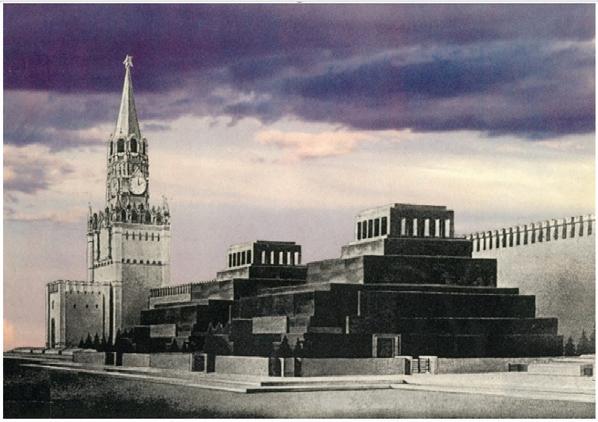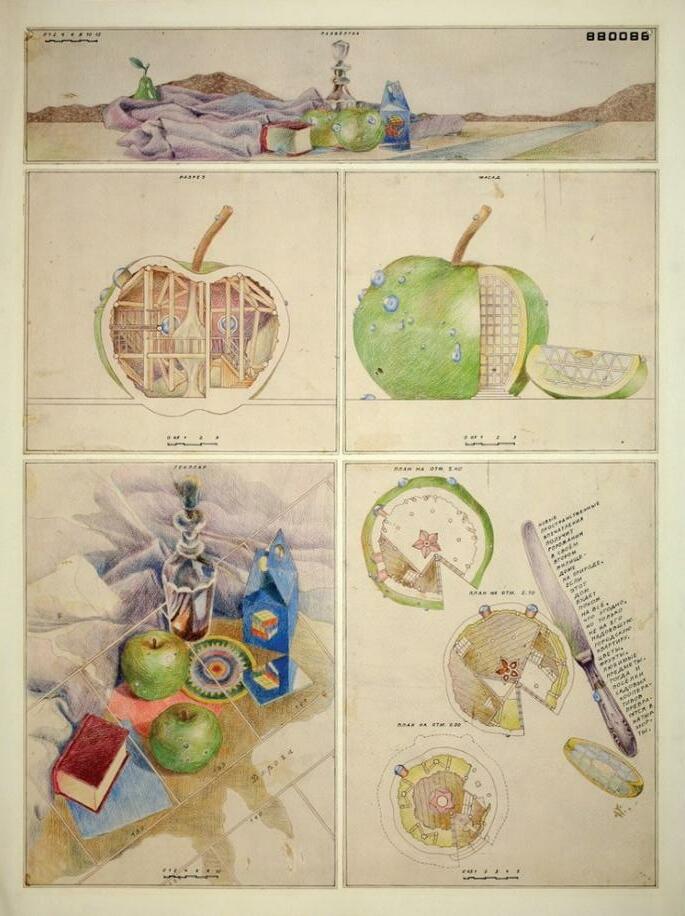
2 minute read
Il’ia Lezhava and Ekaterina Golitsyna, Khrushchevskii Dvorets Sovetov
as a direct intervention into a (paperly) body made up by several articles. The Tower is literally grounded in – or is it superimposed on? – the o cial Soviet text. In other words, the architectural intervention of the Red Tower is a process of its figurative selfinscription and self-localization within the borders of the already existing discursive context. To put it simply: discourse acquires spatial function here, providing the paperists with a material and intellectual platform for grounding their paper fantasies.
The second illustration – The Dome (Kupol) by Aleksandr Brodskii and Ilia Utkin (1989) is no less indicative of key visual predispositions that the paper architecture had. In this work, a dark gray, claustrophobic cathedral-like construction envelops an endless number of sca olding sets, distributed within the dome with no obvious order or purpose. (Ill.2). A closer look at the picture, however, reveals an important dimension. The multileveled geometric forest of horizontal and vertical bars is periodically interrupted by diagonally tilted stepladders that stubbornly advance to the top, – one by one – promising some sort of ascension.
Yet these stairs are no Jacob’s Ladder, and there will be no heaven in the end. Instead, there is a dead-end at the top: the path is blocked by the dome that turns itself into a version of imprisonment. Enveloping walls allow a plenty of intricate moves within the structure but o er no way out. This gloomy prospective is somewhat played down, though. Exits are not the only things that are missing in The Dome; there are no humans inside, either. Which is to say, there are no victims in view; the bars of imprisonment imprison nobody. At least, for the time being.
Red Tower and The Dome suggest two poles, two opposite ways of envisioning the architectural paper project in the end of the Soviet period. A gesture of self-inscription within a ready-made context (in Red Tower) is counterbalanced here by a gesture of self-enclosure and self-erasure (in The Dome). In both cases, the external context plays a crucial role – whether by being embraced (in Red Tower) or by being enclosed from it (in The Dome).
This reliance on ready-made frames and modes of enframing, this constant dialogue with historical forms, contexts, and contents, this desire for some kind of locatedness could be easily traced in many architectural fantasies of Moscow paperists. Their paper projects might be totally imaginary, yet they solidly ground themselves in rather concrete details of social, discursive, or natural world. To clarify more this trend, I provide two additional examples which were on display at the Pushkin State Museum of Fine Arts during the exhibit “The Paper Architecture. The End of Story” in the spring of 20159. (Ill. 3-4) The works by Aleksandr Zosimov and Nikolai and Olga Kaverin articulate especially clearly the same two orientations that I already highlighted in Red Tower and The Dome. Simplifying, they could be described as the orientation towards the external context (self-inscription) and the orientation towards the internal content (self-enclosure). III.3-4





